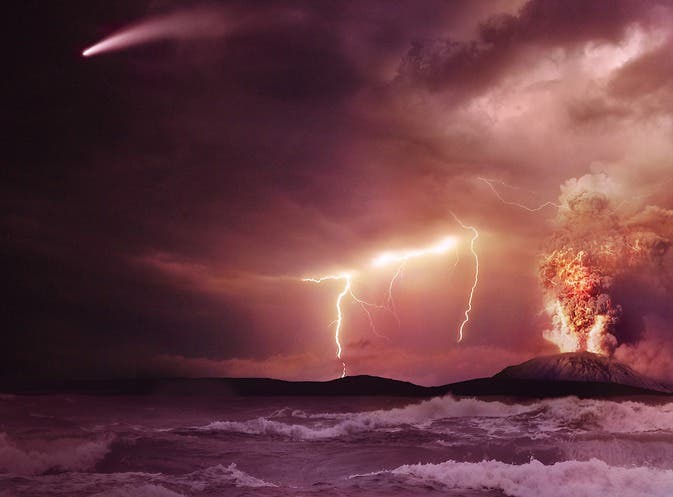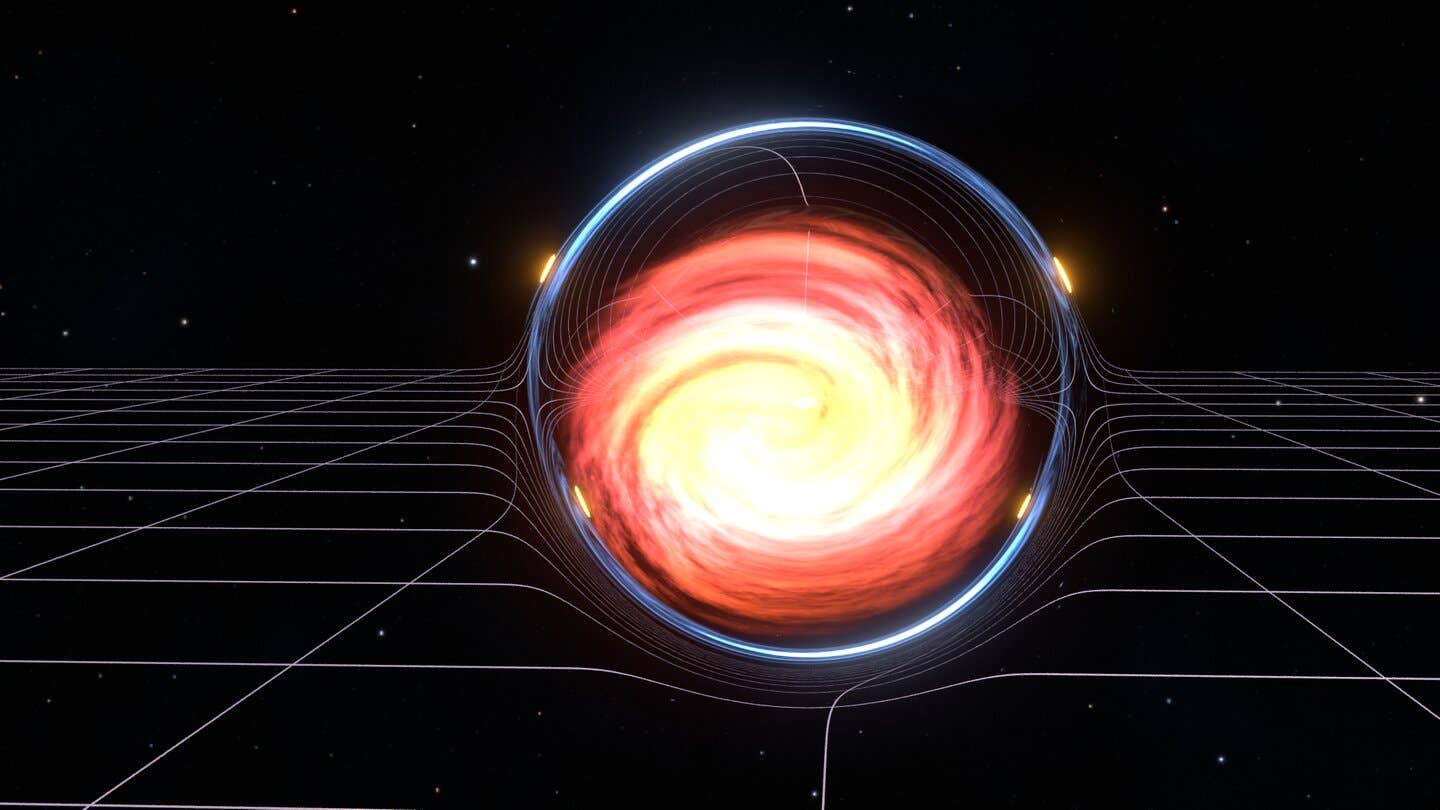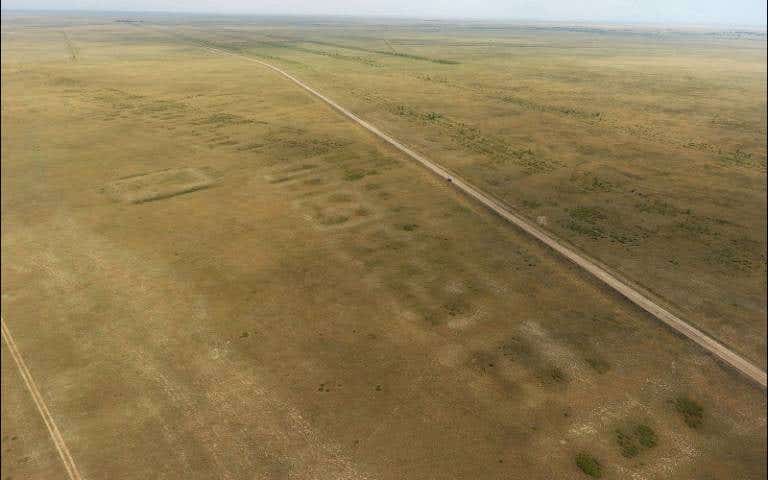NASA scientists identify the origins of life on Earth
The most well-known hypothesis on the origins of life suggests that life might have begun in a warm little pond containing organic molecules

[June 2, 2023: Staff Writer, The Brighter Side of News]
Artist's concept of early Earth. (CREDIT: NASA's Goddard Space Flight Center)
Scientists have long been trying to understand how the first building blocks of life on Earth formed. A new study, published in the journal Life, suggests that solar particles colliding with gases in Earth's early atmosphere may have played a significant role in the formation of amino acids and carboxylic acids, the basic building blocks of proteins and organic life.
The most well-known hypothesis on the origins of life suggests that life might have begun in a "warm little pond," a soup of chemicals that mixed together in concentrated amounts to form organic molecules.
In 1953, Stanley Miller of the University of Chicago attempted to recreate these conditions in the lab by filling a closed chamber with gases thought to be prevalent in Earth's early atmosphere and repeatedly igniting an electrical spark to simulate lightning. A week later, Miller and his graduate advisor Harold Urey found that 20 different amino acids had formed. This was a significant breakthrough in the study of the origins of life.
However, over the last 70 years, scientists have come to believe that the gases used in Miller's experiment were not prevalent in Earth's early atmosphere. Instead, Earth's air was filled with carbon dioxide (CO2) and molecular nitrogen (N2), which require more energy to break down. These gases can still yield amino acids, but in greatly reduced quantities.
Related Stories
As a result, some scientists have suggested alternative energy sources, such as shockwaves from incoming meteors or solar ultraviolet radiation. The recent study by Vladimir Airapetian, a stellar astrophysicist at NASA's Goddard Space Flight Center, suggests that energetic particles from our Sun may have played a significant role in the formation of amino acids and carboxylic acids.
Airapetian used data from NASA's Kepler mission to observe far-off stars at different stages in their lifecycle, which provides hints about our Sun's past. In 2016, he published a study suggesting that during Earth's first 100 million years, the Sun was about 30% dimmer. However, solar "superflares" would have erupted once every 3-10 days during this time, launching near-light speed particles that would regularly collide with our atmosphere and kickstart chemical reactions.
The recent study was conducted in collaboration with Dr. Kobayashi, a professor of chemistry at Yokohama National University in Japan, who has been studying prebiotic chemistry for the past 30 years. Kobayashi was trying to understand how galactic cosmic rays, incoming particles from outside our solar system, could have affected Earth's early atmosphere.
The team created a mixture of gases matching Earth's early atmosphere, combining carbon dioxide, molecular nitrogen, water, and a variable amount of methane. They then shot the gas mixtures with protons (simulating solar particles) or ignited them with spark discharges (simulating lightning), replicating the Miller-Urey experiment for comparison.
The experiments showed that solar particles were more efficient in producing amino acids and carboxylic acids than lightning. As long as the methane proportion was over 0.5%, the mixtures shot by protons produced detectable amounts of amino acids and carboxylic acids. However, the spark discharges required about a 15% methane concentration before any amino acids formed at all. Protons also tended to produce more carboxylic acids than those ignited by spark discharges.
A close up of a solar eruption, including a solar flare, a coronal mass ejection, and a solar energetic particle event. (CREDIT: NASA's Goddard Space Flight Center)
"These experiments suggest our active young Sun could have catalyzed the precursors of life more easily, and perhaps earlier, than previously assumed," Airapetian said.
The study's findings not only provide insight into the origins of life on Earth but also raise questions about the potential for life on other planets. Airapetian suggests that if solar particles played a significant role in the formation of the building blocks of life on Earth, it is possible that similar processes may have occurred on other planets.
"We are now discovering thousands of planets outside of our solar system," Airapetian said. "We can use this knowledge to look for signs of life on those planets and determine whether similar processes may have occurred there."
The study's findings also have implications for the search for extraterrestrial life. Scientists have long been searching for signs of life on other planets, such as the presence of water or organic molecules. The recent study suggests that the presence of solar particles may be another key factor in the development of life.
A close up of a solar eruption. (CREDIT: NASA's Goddard Space Flight Center)
The "wildtype" RNA sequence contains numerous unpaired nucleotide loops, which leads to less stability. The LinearDesign algorithm generates sequences with significantly fewer loops, a more stable structure. (CREDIT: Baidu Research)
"Finding evidence of solar particles on other planets may be a sign that those planets have the potential to support life," Airapetian said.
The study's findings are also significant in the context of climate change. Understanding the role that solar particles played in the development of life on Earth may help scientists better understand the impact that changes in the Sun's activity may have on our planet.
"The Sun's activity has a significant impact on our planet's climate and atmosphere," Airapetian said. "Understanding the role that solar particles played in the formation of life on Earth may help us better understand how changes in the Sun's activity may impact our planet in the future."
Note: Materials provided above by The Brighter Side of News. Content may be edited for style and length.
Like these kind of feel good stories? Get the Brighter Side of News' newsletter.



